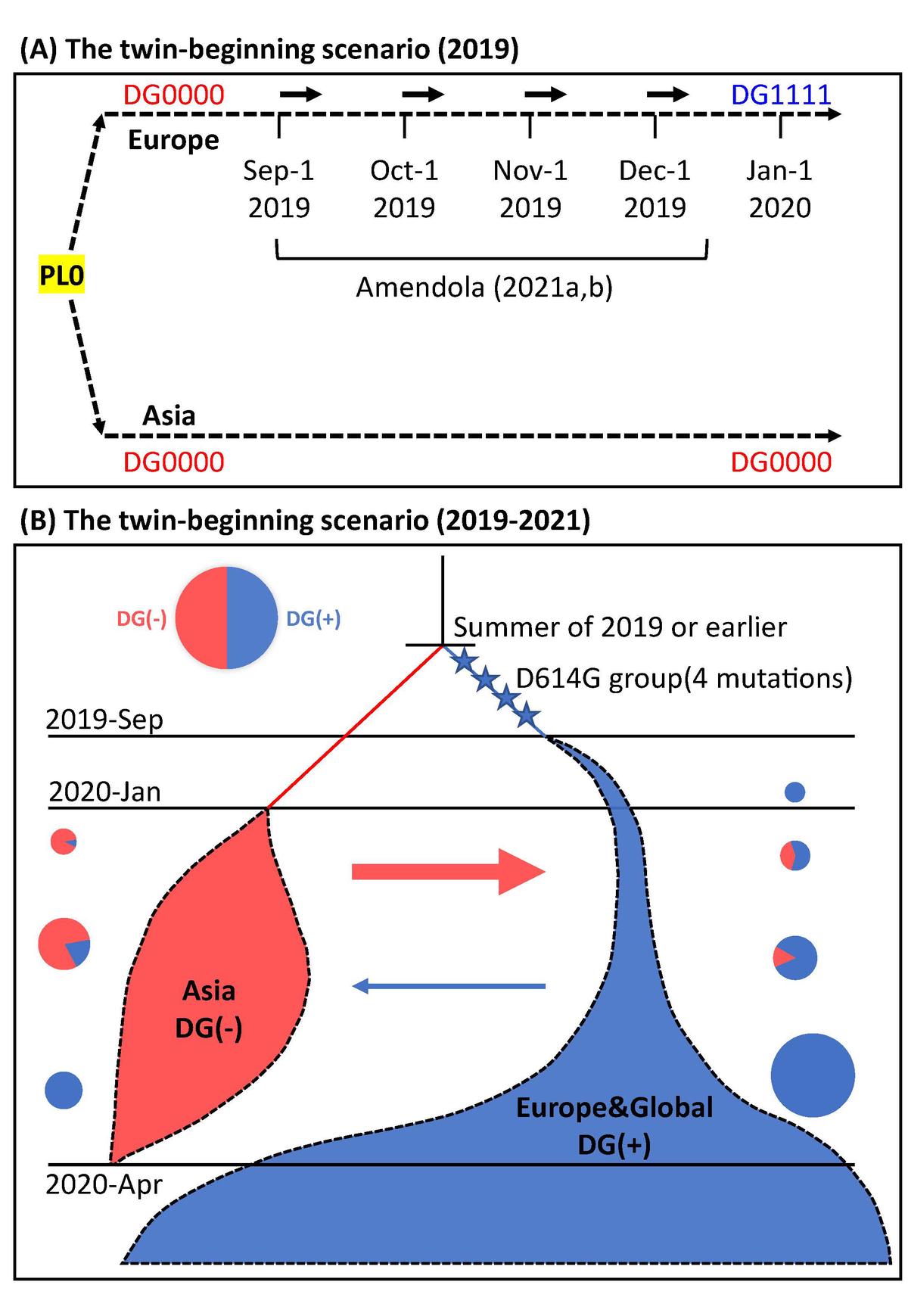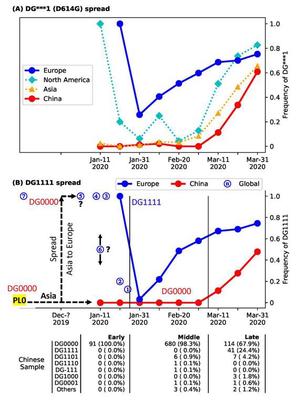The twin-beginnings of COVID-19 in Asia and Europe – One prevails quickly
In the spread of SARS-CoV-2, there have been five waves of replacement between strains, each of which having a distinct set of mutations. The first wave is a group of 4 mutations (C241T, C3037T, C14408T, and A23403G [this being the amino acid change D614G]) has twin-beginnings.
 Image credit: Yongsen Ruan
Image credit: Yongsen Ruan
Overview
- In the spread of SARS-CoV-2, there have been multiple waves of replacement between strains, each of which having a distinct set of mutations. The first wave is a group of 4 mutations that includes D614G. This DG (D614G) group, fixed at the start of the pandemic, is the foundation of all subsequent waves of strains.
- Curiously, the DG group is absent in early Asian samples but present (and likely common) in Europe from the beginning. European data show that the high fitness of DG1111 requires the synergistic effect of all four mutations. However, the European strains would have no time to evolve the 4 DG mutations (0 to 1), had they come directly from the early Asian DG0000 strain.
- The European DG1111 strain had acquired the highly adaptive DG mutations in the pre-pandemic Europe and had been spreading in parallel with the Asian strains. Two recent reports further support this twin-beginning interpretation. There was a period of two-way spread between Asia and Europe but, by May of 2020, the European strains had supplanted the Asian strains globally.

Link to this Research
❤️ Related Research ❤️
- 👉 On the origin of SARS-CoV-2—The blind watchmaker argument
- 📚 A theoretical exploration of the origin and early evolution of a pandemic
- 💬 Evidence of SARS-CoV-2 in Italy, November 2019 and September 2019
- 💡 Others to be added
License
Copyright 2020-present Yongsen Ruan.